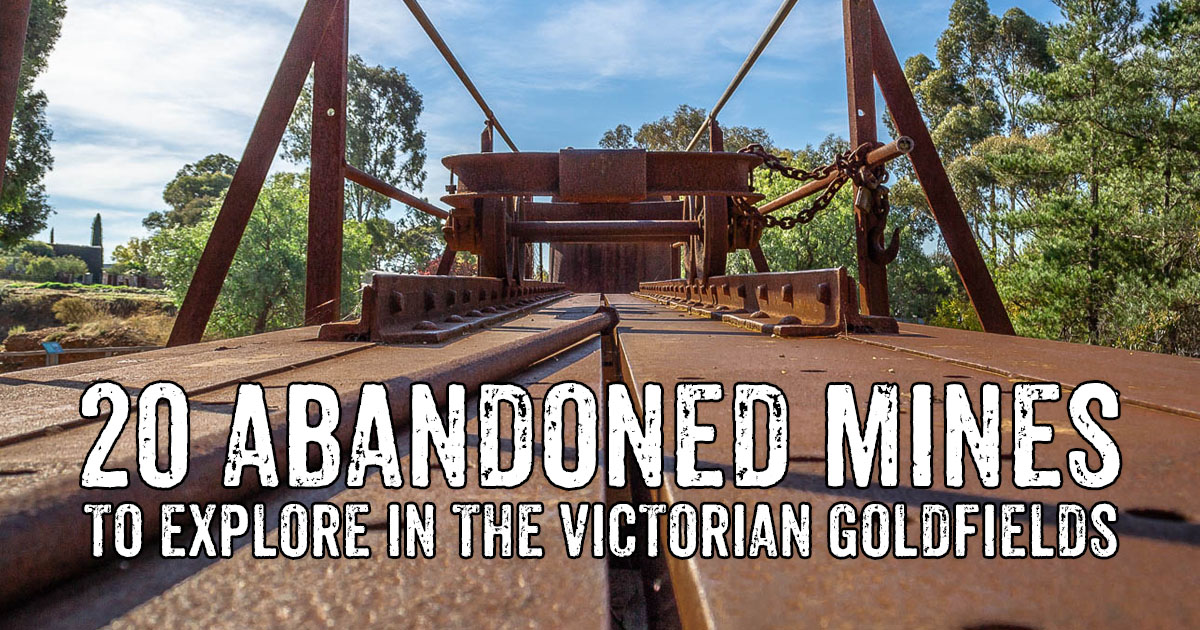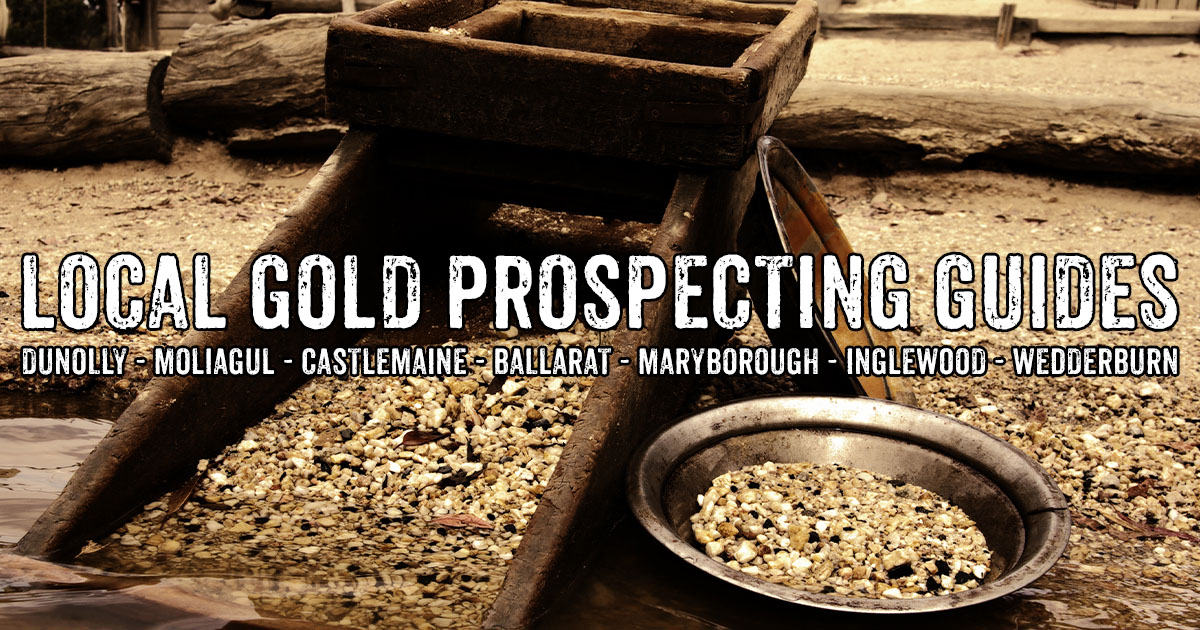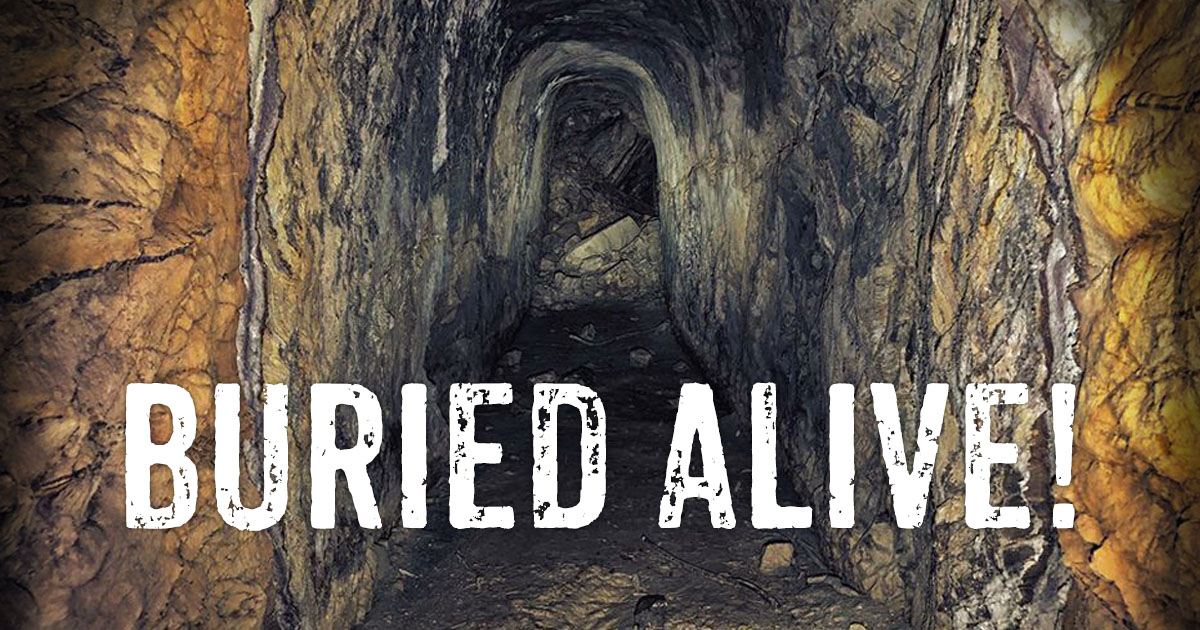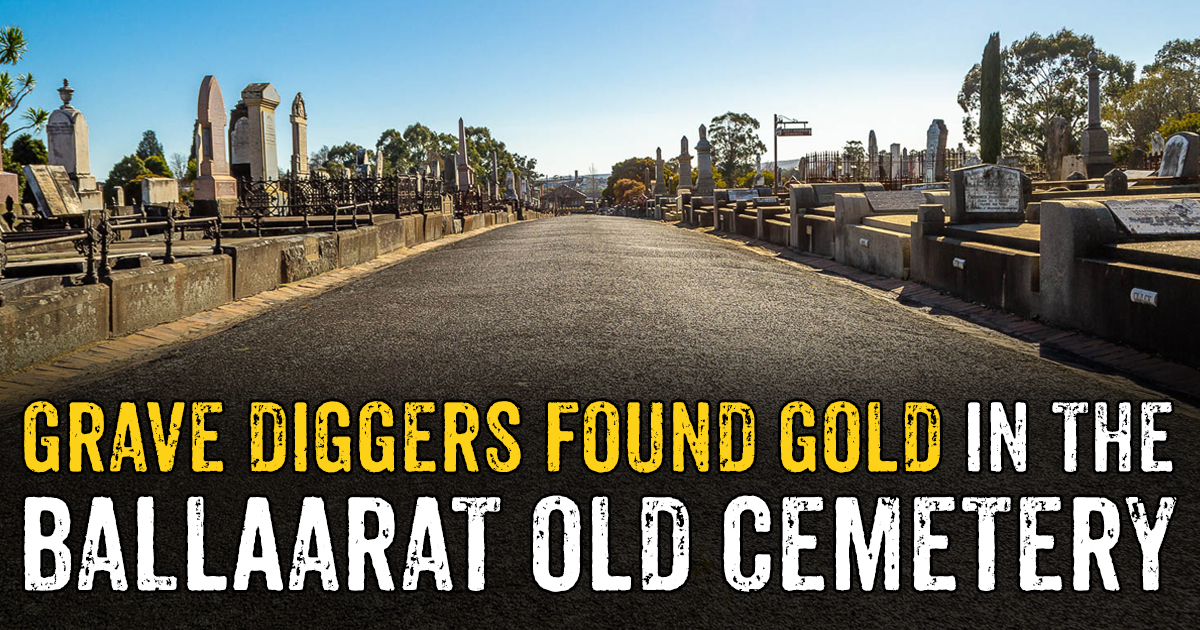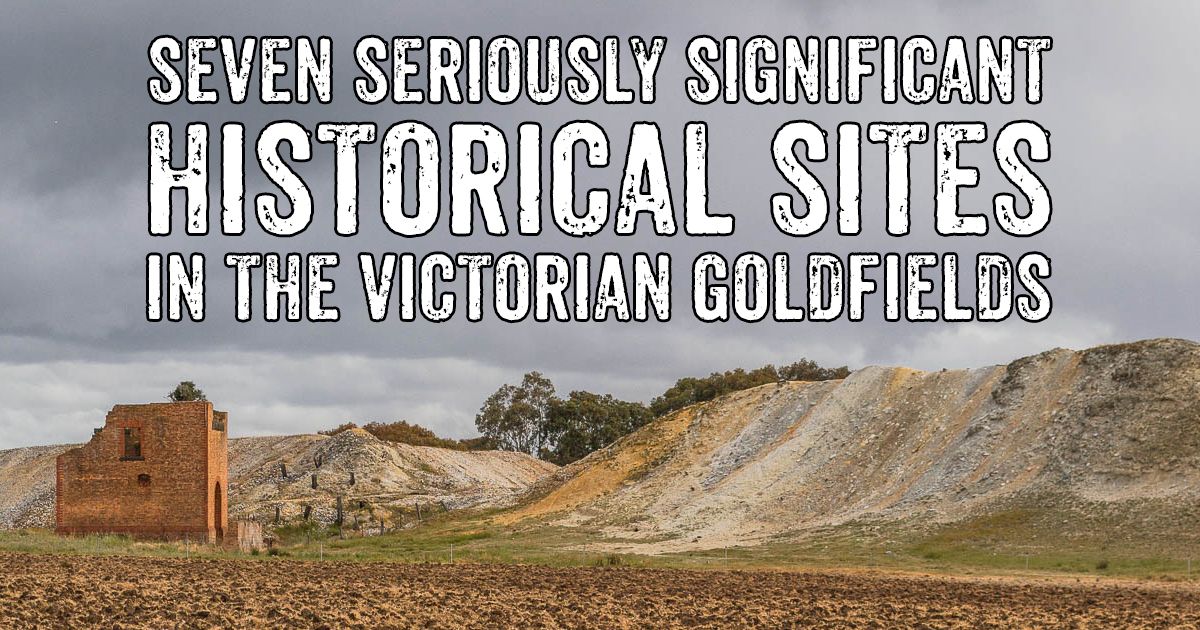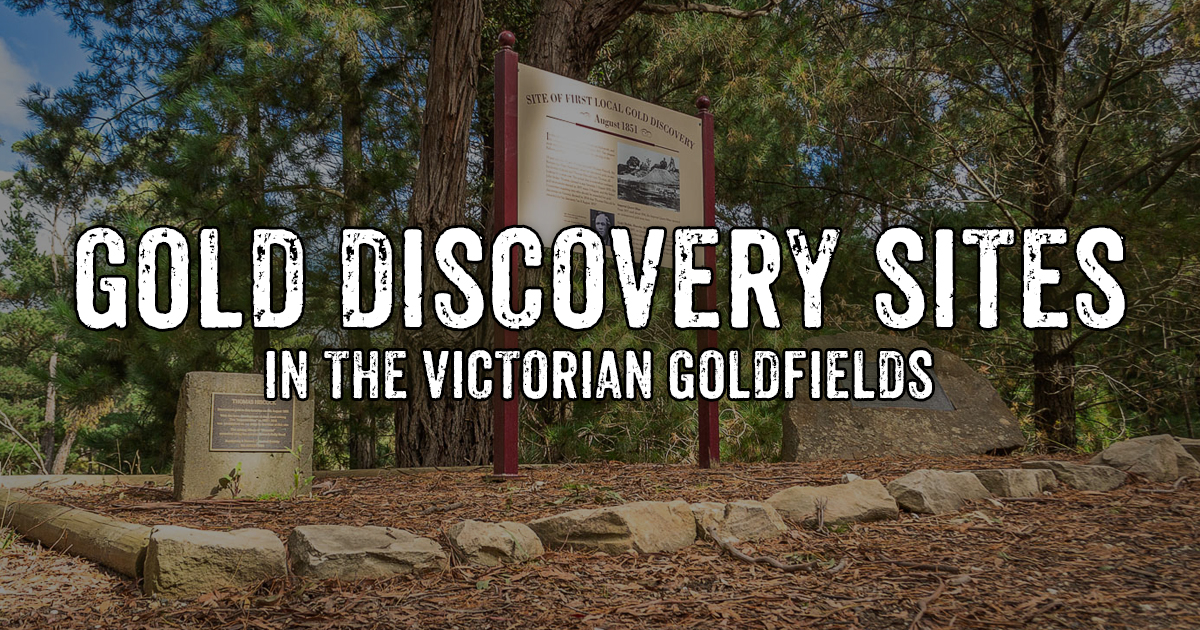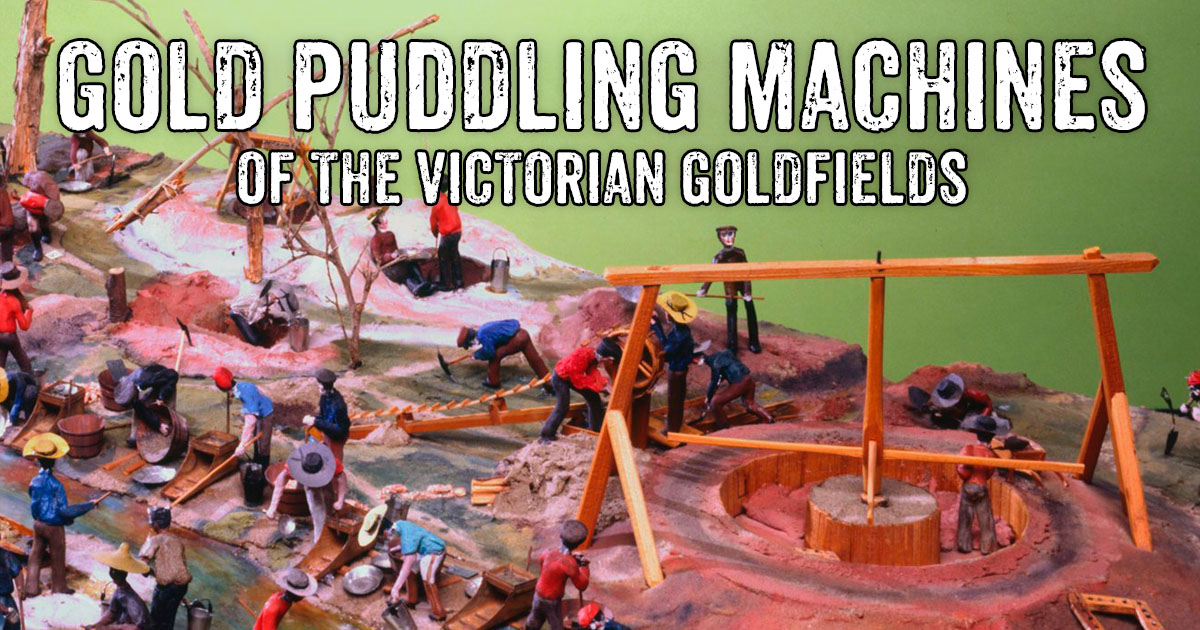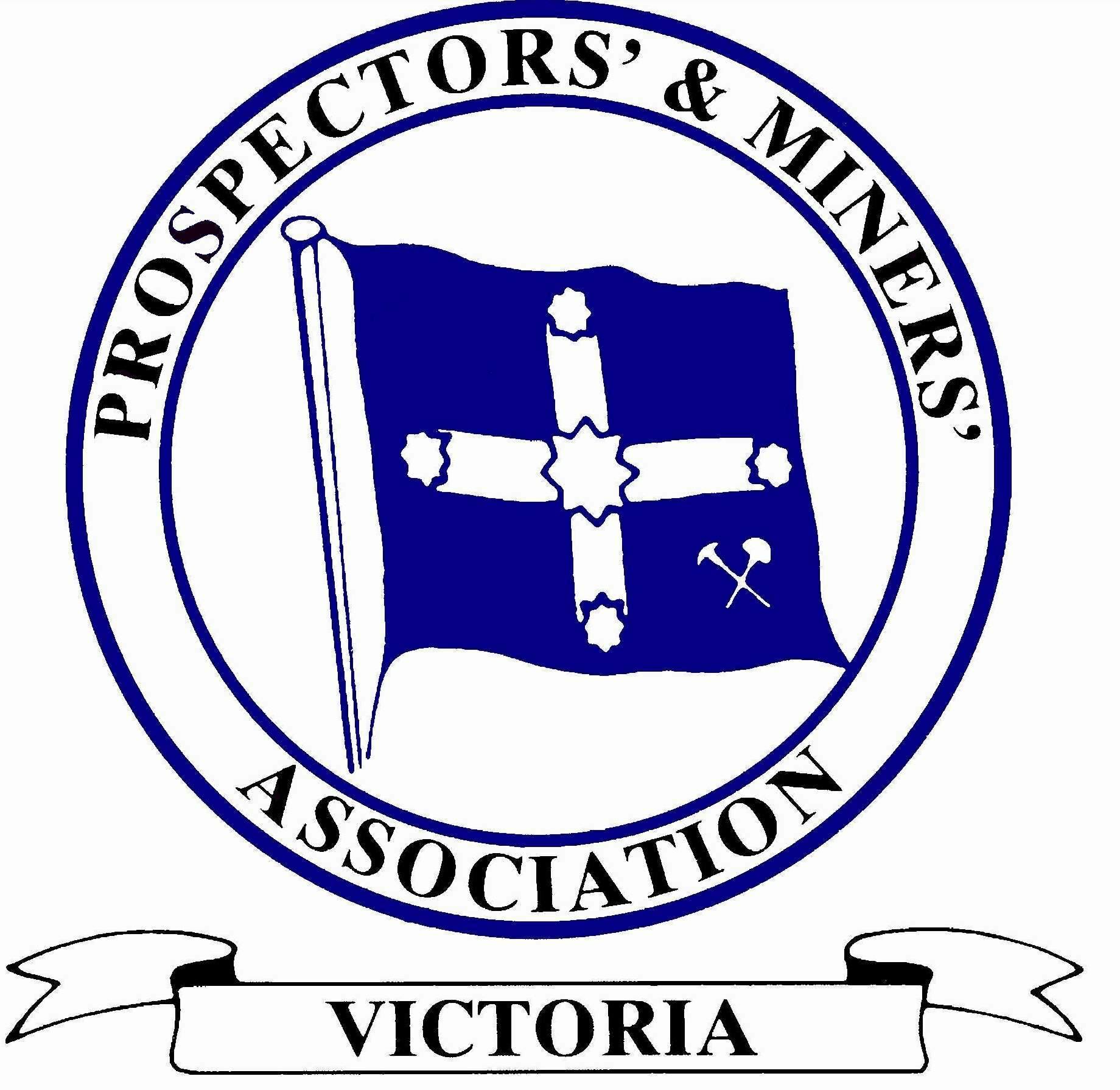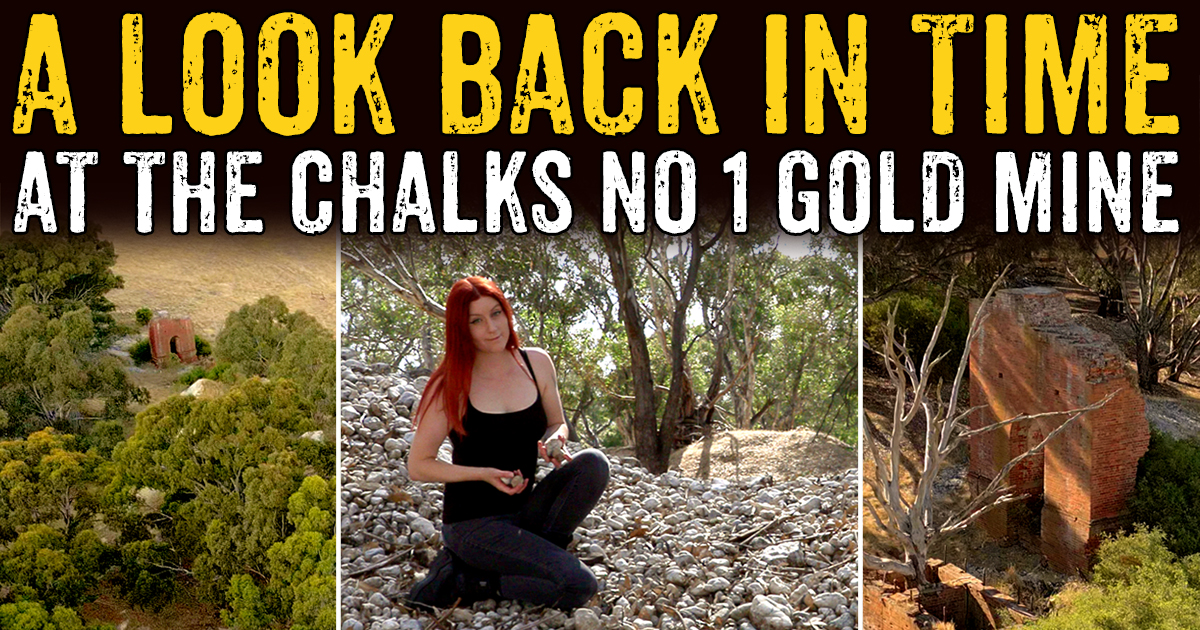
Here in the Central Goldfields, the landscape is filled with the impressive remnants of deep lead mines which operated here long ago.
Have you ever wondered what it would have looked like underground?
Well thanks to a brilliant collection of photographs which were taken in the late 19th century, we have a rare glimpse into the underground workings of the Chalks Number 1.
You can watch the video below, or scroll down to keep reading.
Note - this mine is set on private property, no public access is permitted.
The Chalks No 1 Gold Mine
This mine operated for over a decade in the 1880s and 90s, and today the site is a fantastic example of its kind, with surviving features telling the story of many different aspects of deep lead mining.
I'm here at the Chalks No 1 mine, which is set on private property in the Central Goldfields.
This impressive brick structure is what remains of the mine's Cornish pump house. This huge arch once supported the massive iron beam of the Cornish pump.
This engine removed incredible volumes of water from the ground below, making it possible for miners to reach and extract the rich ancient riverbed, or lead, which was buried here beneath lava flows.
Now, there was a great photo taken of this mine from the other side.
David Syme and Co. 1893. State Library Victoria
This image was published in newspapers in the 1890s and it provides a great opportunity to show you the major above-ground structures of a deep lead mine, comparing the way it looked then to the site as it appears today.
As you can see, the surviving remnants of the pump house are actually just a fraction of its original size.
David Syme and Co. 1893. State Library Victoria
The winding shed stood alongside the pump house to the left, and winding cables ran from the engine, up over the sheave wheels on the poppet head, and down the shaft, hauling cages and equipment in and out of the mine.
Over on the right we can see elevated puddling machines, the mullock pile, and the beginnings of a pebble dump beneath the puddlers.
So, as the company was sinking its shaft and developing its drives, huge amounts of waste rock were brought to the surface. This was trucked out from the poppet head along raised tramways, and dumped out in lines.
Once they reached the lead, they drained it of water and started removing it in sections. It was brought to the surface where it was then processed to extract the gold.
Now deep lead mines used the same processing machines that we often see remnants of at alluvial workings out in the bush - puddlers - but on a grand scale.
David Syme and Co. 1893. State Library Victoria
These machines were steam operated and were often elevated alongside the poppet head. The puddlers washed the alluvial material and discarded all the worthless pebbles, which were discharged from the bottom of the machines and dumped out in long lines using tramways.
So now as well as the mullock dumps of waste rock, we've got these pebble dumps of river rocks.
So what was left in the puddlers, was fine river sands, gravels, and gold. The gold was recovered from this material by sluicing, then the tailings, in the form of a fine slurry, were sent out to a tailings dump.
During the puddling process, overflow from the machines is passed over blankets to catch any fine gold in the slimes.
So this is why old deep lead mines have several very different kinds of waste dumps at the site - mullock, pebbles, sandy gravels, and slimes.
This general setup was typical of many deep lead mines, although not all of them had those huge Cornish beam pumps, and not all of them elevated their puddling machines.
Underground photos of the Chalks No 1
So now, let's take a look at those incredible photos!
The Deep Leads of Victoria. Hunter, S. 1909. Restored and enhanced by The Prospectors Kit
These images were taken while the mine was operating in the late 19th century, and were printed in various publications, including Stanley Hunter's brilliant 1909 book on the deep leads of Victoria.
.jpg)
The Deep Leads of Victoria. Hunter, S. 1909. Restored and enhanced by The Prospectors Kit
Here we can see two miners standing in the cage, which was used to raise and lower men in and out of the mine.
.jpg)
The Deep Leads of Victoria. Hunter, S. 1909. Restored and enhanced by The Prospectors Kit
When they reached the bottom, they stepped out onto the plat, which was a chamber at the beginning of the reef drive. In this photo we can see rakes of trucks and multiple lines of rail heading off down the drive.
.jpg)
The Deep Leads of Victoria. Hunter, S. 1909. Restored and enhanced by The Prospectors Kit
The rail heads down the reef drive which then branches into two.
The reef drive is the lowest level in a deep lead mine. It travels through the bedrock, or reef rock as it was called, extending out below the lead.
Washdirt and mullock are trucked to the shaft along the reef drive, and timbers are conveyed along it to the workings.
Now the lead itself was not worked from the reef drive, it was worked from slightly higher levels of the mine. The reef drive could be set anywhere from a few feet to 60 or sometimes even 80 feet below the actual wash workings.
.jpg)
The Deep Leads of Victoria. Hunter, S. 1909. Restored and enhanced by The Prospectors Kit
Here we can see a miner removing washdirt from the face up in the lead. They would take the lowest portion of the wash, and the top part of the bedrock upon which the wash was sitting.
All this would be conveyed to the surface and processed in the puddling machines to recover the gold.
.jpg)
The Deep Leads of Victoria. Hunter, S. 1909. Restored and enhanced by The Prospectors Kit
Another photo shows a balance shaft. Now this was used to lower washdirt from the wash drive into the reef drive below, to be trucked back to the shaft.
A balance shaft typically has three compartments - two for cages and one for a ladderway. Two cages are used to take one truck each, and the cages are connected to each end of one chain which passes over a pulley at the top of the compartments.
Lithographed by Herman Deutsch, 1860s. State Library Victoria.
As a loaded truck is sent down from the wash workings, it pulls the other cage, containing an empty truck, up to the top. The speed of the cages is regulated by a brake, which is operated by a lever.
So from the balance shaft, the trucks of washdirt were hauled back along the reef drive to the main shaft where they were put in the cage and hauled to the landing brace at the surface.
.jpg)
The Deep Leads of Victoria. Hunter, S. 1909. Restored and enhanced by The Prospectors Kit
Here they were removed from the cage and trucked out along rails to the puddlers.
.jpg)
The Deep Leads of Victoria. Hunter, S. 1909. Restored and enhanced by The Prospectors Kit
Unfortunately I haven't found a photo showing the Chalks No 1 company's puddlers, but here's a great one which was taken at the Duke Company's mine in Timor.
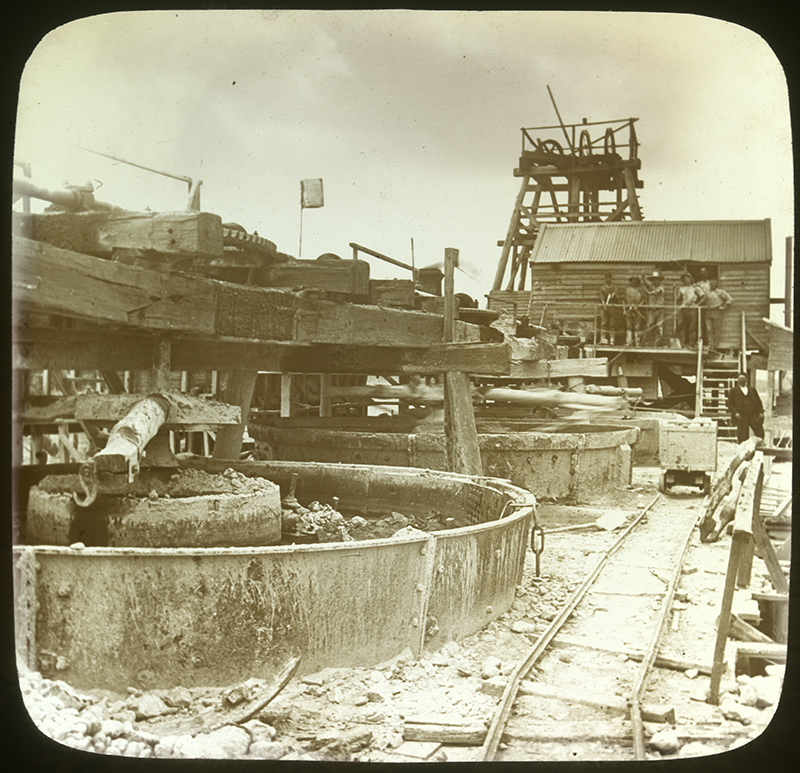
Chalks No. 1 would have looked much the same. The material is washed, the larger stones discarded, and the finer material is discharged from the machines into sluices below which trap the gold.
These photos which were taken at Chalks Number 1 give us a brilliant glimpse into the operations of an underground deep lead mine.
Cyanide workings
Chalks Number 1 stopped operations in the late nineteenth century. But that wasn't the end of the story for this site.
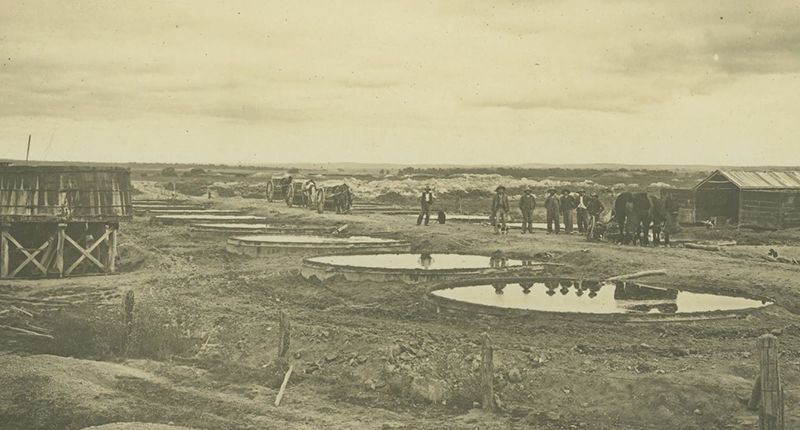
The cyanide process was introduced to the Victorian Goldfields in the late 19th century, and quickly became a widely used method of recovering gold from very fine slimes and sands.
The process was also used to retreat the old tailings piles of many mines, with excellent results, and that is exactly what has happened here.
In the 1930s,a company came in and reprocessed the tailings sands using cyanide treatment. They put in a series of vats which were used to treat the sands in a cyanide solution, and we can still see the footprints of these vats alongside the mine today.
Learn more
The photos of Chalks 1 are available to view and download from the Geological Survey of Victoria's online collection, but the versions I used in this video have been digitally restored and enhanced as part of a project called The Prospectors Kit. This is an extensive and valuable online resource for anyone researching gold mining history and gold prospecting locations.
I'd like to say a huge thank you to the owner of the Chalks No 1 mine, who very kindly allowed me to visit the mine for filming and photos.
This mine is set on private property, so please note that no public access is permitted.
If you'd like to check out another great example of one of the Chalks mines, the Chalks No 3 Company's no 1 shaft was located in what is now the Brian Dowie Conservation Reserve.
Here you can get an up close look at the mine's huge brick engine beds, and learn about the history of the mine through a series of informative signs.

Grand Duke Mine, Timor VIC
You can also get an up close look at an impressive Cornish pump house just out the road in Timor, at the Grand Duke mine.


